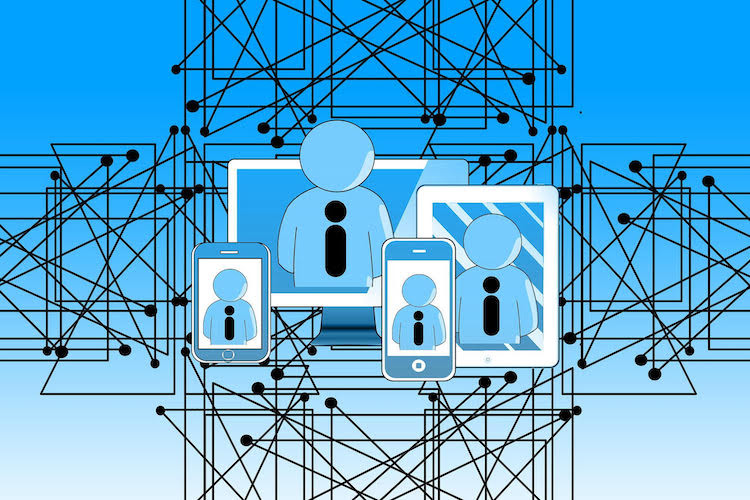Small steps, big benefits

The theme of the third in the series of Talking Industry online panel discussions organised by DFA Media, the publisher of Drives & Controls, was Industrial Networks, IIoT and Communications. The session chairman Andy Pye reports on the event.
Talking Industry is DFA Media’s new way of engaging with an audience of automation engineers through online panel sessions with experts in a particular aspect of automation. The third event in the series – and the first of six planned for 2021 – covered the topics of industrial networks, the IIoT and communications.
The panellists focussed on three broad areas:
• Taking that first step in the Industry 4.0 revolution. What the options and how do they vary for companies, small and large, and in different sectors?
• Enabling technologies in industrial communications. The importance of uniform standards. Are proprietary systems on the way out?
• Moving data from the manufacturing plant through the enterprise - what are the technical issues and security implications?
The 170 attendees ranged from novice to expert, and the live questions asked during the seminar reflected that. The session itself is CPD-approved and delegates can be issued with attendance certificates for their own CPD purposes, which makes the event invaluable for educational purposes.
It was perhaps right at the end of the session that Daniel Phillips-Fern (Ixon Cloud) came out with the key message of the event – and the one that perhaps we should have started with!
“From experience,” he said, “companies that three years ago were telling me ‘we don't want to start utilising this just yet’, are now three years behind. It's as simple as that. And their competitors are three years ahead of them. So the best time to do this was three years ago; the next-best time is now. There's a myriad options out there to help you do it, including ourselves, and many, many other vendors out there.”
First steps
In the first section of the discussion, all of the speakers agreed that the best way to initiate Industry 4.0 techniques is to start simple and take small steps. Even small steps will show an immediate benefit, often with minimal outlay.
It seems that most companies fall into two categories: those that are already very familiar with the Industry 4.0 revolution and everything that goes with it; and others who are perhaps are still shying away and quite frightened as to what they need to do.
“One thing to say straight away is that Industry 4.0 really does mean different things across sectors,” pointed out Daniel Phillips-Fern (Ixon Cloud). “And generally, there isn't. A lot of companies kind of fall into that trap of thinking, that there must be one solution that meets everyone's requirements. Which just isn't how it works.
“There's a key stage at the start: what do you want to achieve using the technology?,” he continued. “That can really differ across industries and across companies. Maybe you want to achieve higher machine or plant efficiency, or less downtime, or wastage; you might want happier or more engaged customers through delivering better service, or to produce a better end-product.
“Many companies don't actually understand what they want to achieve before they set out,” Phillips-Fern added. “That, in turn, creates a strange dynamic where the solutions offered actually drive the end-result, whereas you really need to work backwards – start with what you actually want to achieve, and then find the right solution.”
Barriers to entry include selecting vendors and technologies, costs, expertise, staffing, and finding project leaders. A large multinational manufacturer will have a much larger budget, and probably will already have the expertise and team to build or create the solution. But the time it takes to implement this across multiple sites will be much longer than for an SME machine-builder that just wants to collect machine data, and then compare it across different assets.
“A pilot is a great way to start, because that's a low-cost way of implementing a project,” Phillips-Fern suggested. “And during the pilot, you can then get a real idea of the total cost, as well as some tangible benefits.”
Enabling technologies
Chris McComb (Profibus & Profinet International) led the second section of the discussion on enabling technologies. “Every manufacturer, every type of network, every age of machine – all of that can be connected,” he said. “Brownfield sites will be a mix of technologies.
“If you are taking all your data from the network, the network itself must be healthy,” he added. “An industrial plant may be new or old. Good infrastructure needs constant health checks, with preventative maintenance on the technology, the hardware, the systems and the mechanical parts.
“But,” he continued, “networks are often overlooked – network infrastructure can be copper, it can be fibre, it can be wireless and is usually a mix of all those different technologies.
Transporting data
Moving on to the third theme, Michaël Lefeuvre (Red Lion Controls) suggested that “the process of monitoring a production line is moving from a pyramid system to more of a service system, where the system goes to collect the data which it needs directly from the sensor. Before we were just getting data out of the PLC. Everything is moving in this direction, which means that even if the PLC doesn’t work, you still can get data out.
“Despite the flexibility, customers do have challenges with this, one of which is security,” he continued. “Making everything connected can have an influence on different parts of the factory, whereas before this was not the case, because each part was autonomous and just connected with local devices. But solutions are arriving on the market and I think that is good for the future.
“The security risk is manageable and there are a lot of strategies; despite the media attention they get, big cyber-attacks are rare,” Lefeuvre added. “Cyber problems are more likely to be a small-scale malevolent action or just due to human error (mishandling actions).
“For example, you might ask a subcontractor to come into your factory to install a new machine. And on his computer, he has a fixed IP address, which is already used in the factory. He connects his computer on a simple switch without any security. And you create a double IP on the same network, which causes trouble. These types of thing happen if you don't put in security and if you don't create secure areas or protected areas.”
A member of the audience, Geoff Grant of MP Filtri UL, a manufacturer of condition-monitoring equipment, commented that his company has many customers that want remote monitoring via cloud and would like a plug-and-play solution.
Phillips-Fern explained that is exactly what Ixon offers for connecting devices to the cloud. “In general terms, regarding the sort of technical and security implications, I agree with Michaël that human error is very much a part of all this, and a lot of cyber-security attacks are attacks or internal issues that happen and are not actually intentional – simply, like you say, human error.
"Because Ixon is a cloud-based platform, we are completely scalable,” Phillips-Fern continued. “We don't have to worry about local conditions. One thing I do hear a lot on my travels is: ‘We don't quite trust the cloud, we don't quite get it’. I always say to them: ‘OK, you don't trust the cloud. But you’re walking around with an iPhone that's got your banking apps on and you use Amazon!’ So it goes back to your network, your infrastructure, your network as a backup, proper DMZ, using managed switches. And it goes back to using the correct people with a fixed certification and the correct understanding of that network.”
You can view a video of the complete Talking Industry discussion via this link:
https://www.youtube.com/watch?v=PCaHBCccBV8&t=276s
The panel

Chris McComb BSc MBA CEng
PI UK Profibus & Profinet
A chartered engineer with more than 25 years’ experience in the automation industry, Chris is managing director of the system integrator iTech. For more than 15 years he was a corporate account manager with Siemens and ABB, and before that he was a special-purpose machine designer and builder.

Daniel Phillips-Fern
UK Country Manager
Ixon Cloud
Since joining to Ixon to lead its UK division in 2018, Daniel has been on a mission to help machine-builders and system integrators to improve their service, support and data analytics offering through the power of IIoT. This resulted in considerable growth for the company in the UK over the past two years.

Michaël Lefeuvre
Product Manager Europe
Red Lion Controls
Michaël Lefeuvre has spent more than a decade working in various departments of Red Lion Controls. An important part of his job is to position the company’s portfolio in the regional markets and to support its sales and marketing team.

Andy Pye
Webinar Chair and Consulting Editor
DFA Media
Andy has edited many leading UK design and manufacturing titles over the past four decades. He is a graduate material engineer and spent five years in engineering consultancy before entering technical publishing in 1980.





